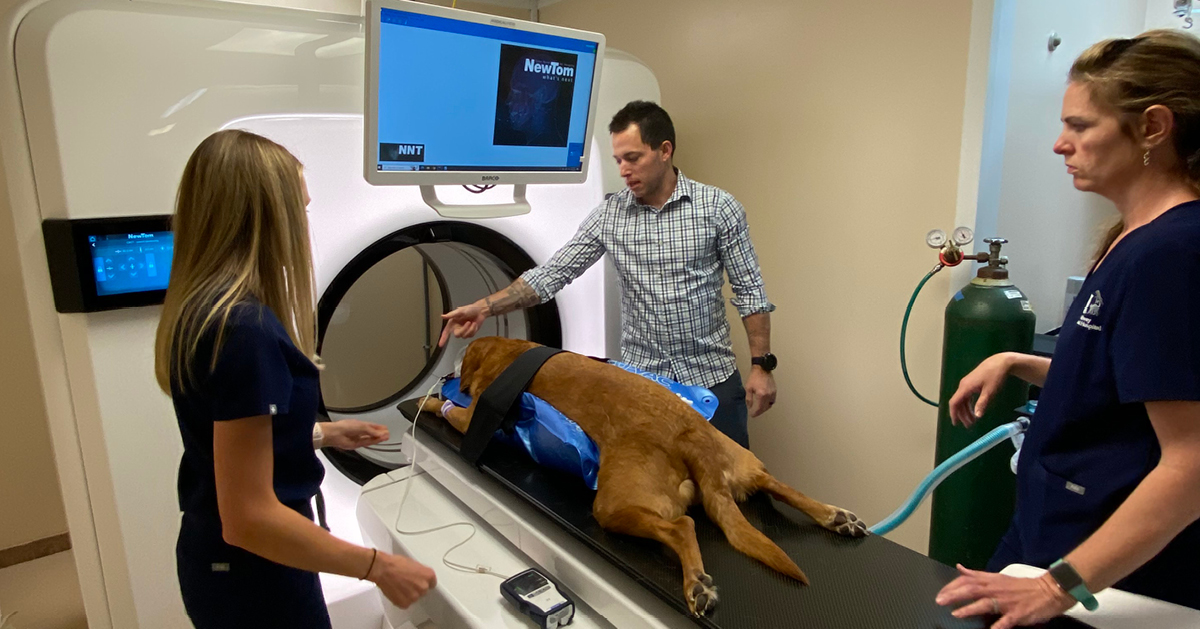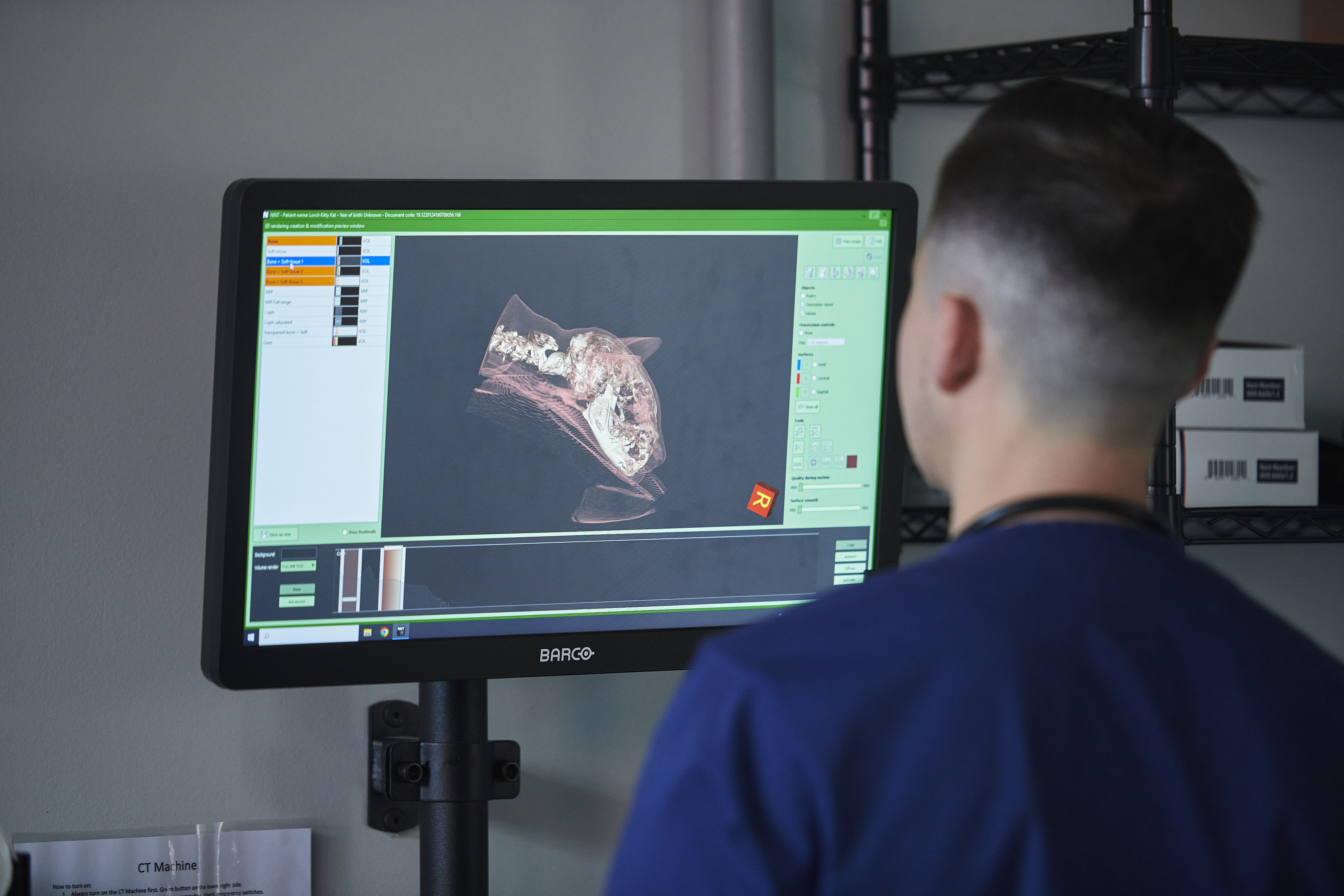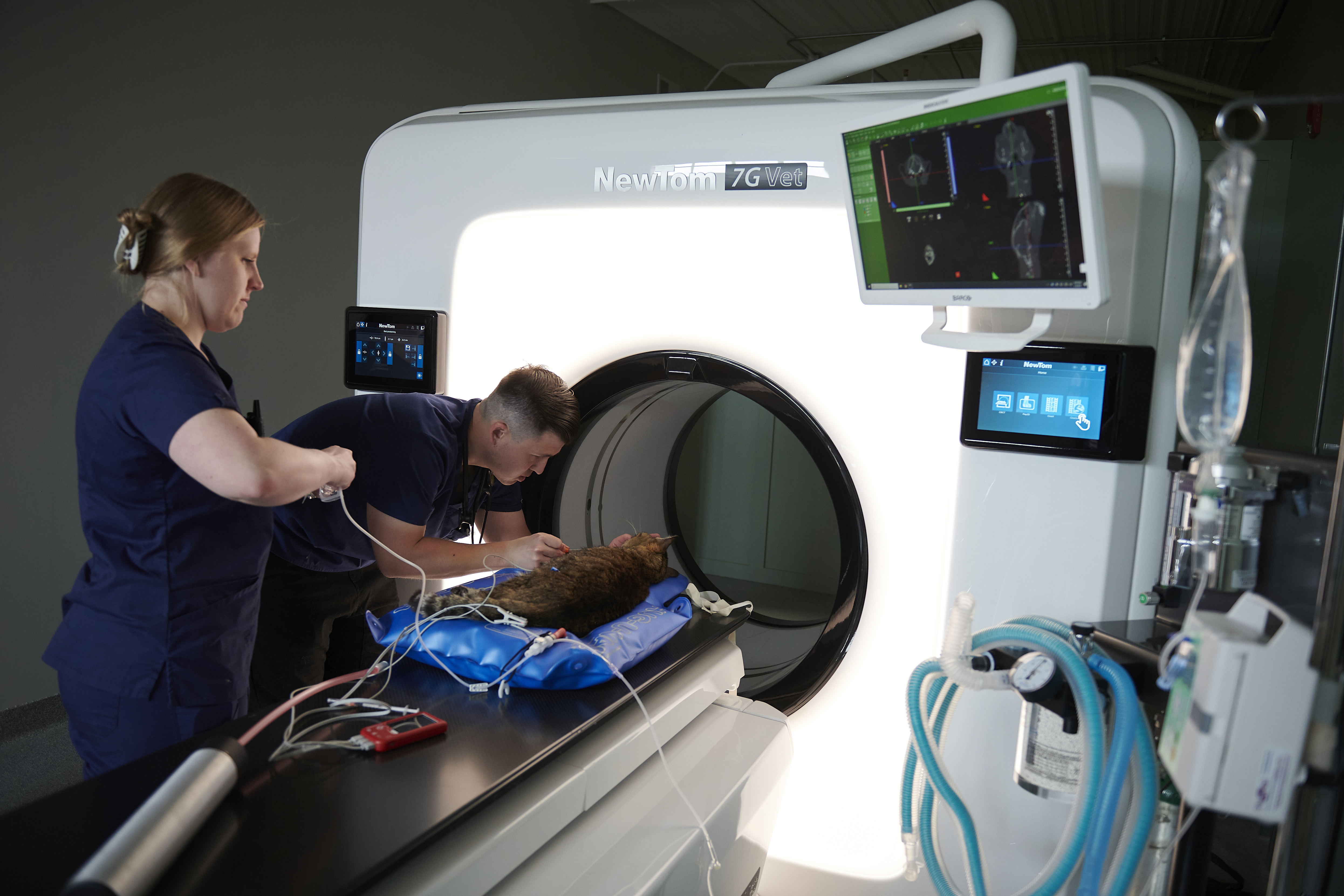In recent years, Patterson Veterinary has seen a notable rise in the number of general practices adopting in-house CT systems as part of their diagnostic capabilities.
From the widespread adoption of digital radiography to the increasing accessibility of advanced modalities like computed tomography (CT), diagnostic tools once limited to specialty centers are becoming standard in general practice.
This shift is not only redefining how veterinarians diagnose and treat disease – it’s raising the bar for patient care across the board.

The rise of CT in general practice
At Patterson Veterinary, we’ve seen a marked uptick in general practices investing in in-house CT systems over the last five years. Several key factors are driving this trend:
-
Veterinary-specific CT systems Compact CT units designed specifically for companion animals are changing the landscape. These machines offer rapid acquisition (often in under a minute), easy-to-use software and veterinary workflows that reduce the need for extensive technician retraining.
-
Revenue generation Clinics are recognizing the return on investment. With even modest scan volumes, practices can see significant revenue gains while enhancing diagnostic capabilities.
- Client expectations Pet owners are more willing than ever to pursue advanced diagnostics. Offering CT in-house positions a practice as modern, capable and comprehensive. It also opens the door to new clients referred for imaging.

The future: What’s next in veterinary imaging?
Veterinary imaging isn’t standing still. Several emerging technologies are poised to further reshape the diagnostic landscape.
Digital tomosynthesis
A hybrid between traditional radiography and CT, tomosynthesis produces multiple pseudo-3D slices using a standard X-ray tube and digital detector. It offers more detail than standard radiographs but with lower cost and radiation than CT.
Initially used in mammography imaging, it’s now being explored for small animal orthopedic and dental applications. Tomosynthesis could offer an intermediate step for practices not yet ready for full CT but needing greater depth resolution.
AI and image interpretation tools
Artificial intelligence is also making inroads. AI-assisted interpretation platforms can highlight abnormalities, suggest differential diagnoses and reduce oversight, particularly helpful for generalists without radiology training. While still in early stages, the synergy between AI and imaging will likely accelerate as datasets grow and algorithms improve.
Make sure training and support are included with your equipment purchase
As the diagnostic capabilities of veterinary practices expand, imaging is taking center stage. CT – once a specialty-only modality – is now redefining what’s possible in general practice. With the ability to diagnose more accurately, treat more efficiently and serve more patients in-house, veterinary imaging is not just a tool, it’s a growth engine.
At Patterson Veterinary, we are proud to support practices in integrating these technologies with the training, equipment and service needed to succeed. Whether you’re just starting with ultrasound or looking to invest in your first CT system, the future of diagnostics is here – and it’s never looked clearer.
Get the full white paper here.
Share
Related blogs

The Hidden Costs of Old Imaging Equipment in Veterinary Practices
So what’s really at stake when you keep using aging technology?

